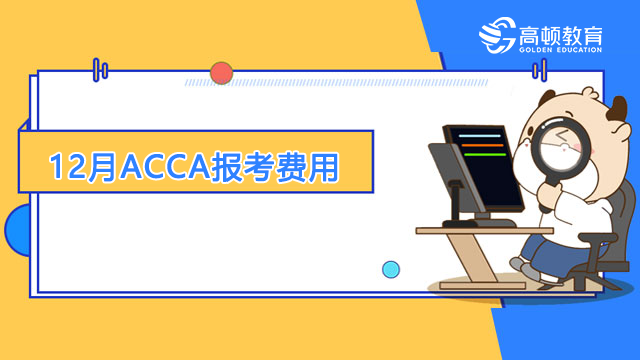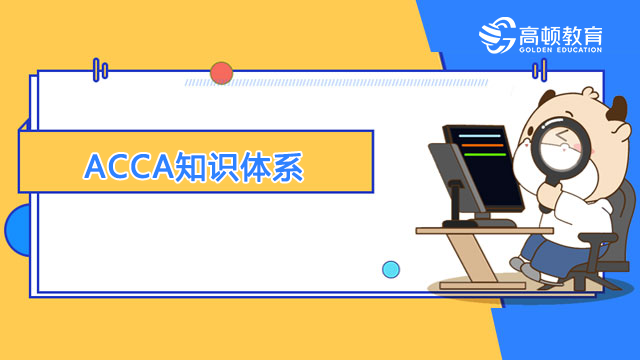ACCA考试《审计与认证业务F8》知识点(3)
来源:
高顿网校
2015-03-27
RELEVANT TO ACCA QUALIFICATION PAPER F8
Subsequent events
Students of financial reporting and auditing papers will have to gain an
understanding of how subsequent events (also known as ‘events after the
reporting period’) affect the financial statements of an entity. This article will
consider the financial reporting aspects concerning subsequent events using a
case study type scenario, and will then discuss the auditing requirements that
candidates of Paper F8, Audit and Assurance need to be aware of.
Financial reporting considerations
In almost all circumstances, financial statements will not be finalised until a
period of time has elapsed between the year-end date and the date on which
the financial statements are (expected to be) issued. Therefore, regard has to
be given to events that occur between the reporting date and the date on which
the financial statements are (expected to be) authorised for issue.
IAS 10, Events After the Reporting Period stipulates the accounting and
disclosure requirements concerning transactions and events that occur
between the reporting date and the (expected) date of approval of the financial
statements. Among other things, IAS 10 determines when an event that occurs
after the reporting date will result in the financial statements being adjusted,
or where such events merely require disclosure within the financial statements.
Such events are referred to in IAS 10 as ‘adjusting’ or ‘non-adjusting’ events.
Students who have studied Paper F3, Financial Accounting will have come
across such terminology and it is imperative that they can differentiate
between an adjusting and a non-adjusting event. IAS 10 prescribes the
definitions of such events as follows:
Adjusting event
An event after the reporting period that provides further evidence of conditions that
existed at the end of the reporting period, including an event that indicates that the
going concern assumption in relation to the whole or part of the enterprise is not
appropriate.1
Non-adjusting event
An event after the reporting period that is indicative of a condition that arose after the
end of the reporting period.1
Example 1
You are the trainee accountant of Gabriella Enterprises Co and are preparing
the financial statements for the year-ended 30 September 2010. The financial
statements are expected to be approved in the Annual General Meeting, which
2
SUBSEQUENT EVENTS
APRIL 2011
is to be held on Monday 29 November 2010. Today’s date is 22 November
2010. You have been made aware of the following matters:
1. On 14 October 2010, a material fraud was discovered by the
bookkeeper. The payables ledger assistant had been diverting funds into
a fictitious supplier bank account, set up by the employee, which had
been occurring for the past six months. The employee was immediately
dismissed, legal proceedings against the employee have been initiated
and the employee’s final wages have been withheld as
part-reimbursement back to the company.
2. On 20 September 2010, a customer initiated legal proceedings against
the company in relation to a breach of contract. On 29 September 2010,
the company’s legal advisers informed the directors that it was unlikely
the company would be found liable; therefore no provision has been
made in the financial statements, but disclosure as a contingent liability
has been made. On 29 October 2010, the court found the company
liable on a technicality and is now required to pay damages amounting
to a material sum.
3. On 19 November 2010, a customer ceased trading due to financial
difficulties owing $2,500. As the financial statements are needed for the
board meeting on 22 November 2010, you have decided that because
the amount is immaterial, no adjustment is required. The auditors have
also confirmed that this amount is immaterial to the draft financial
statements.
Required:
(a) For each of the three events above, you are required to discuss whether the
financial statements require amendment.
Answer:
When presented with such scenarios, it is important to be alert to the timing of
the events in relation to the reporting date and to consider whether the events
existed at the year-end, or not. If the conditions did exist at the year-end, the
event will become an adjusting event. If the event occurred after the year-end, it
will become a non-adjusting event and may simply require disclosure within the
financial statements.1. Fraud
Clearly the fraud committed by the payables ledger clerk has been ongoing
during, and beyond the financial year. Fraud, error and other irregularities that
occur prior to the year-end date – but which are only discovered after the yearend
– are adjusting items, and therefore the financial statements would require
amendment to take account of the fraudulent activity up to the year-end.
3
SUBSEQUENT EVENTS
APRIL 2011
2. Legal proceedings
At the year-end, the company had made disclosure of a contingent liability.
However, subsequent to the year-end (29 October 2010), the court found the
company liable for breach of contract. The legal proceedings were issued on
20 September 2010 (some 10 days before the year-end)。 This is, therefore,
evidence of conditions that existed at the year-end. IAS 10 requires the result
of a court case after the reporting date to be taken into consideration to
determine whether a provision should be recognised in accordance with IAS
37, Provisions, Contingent Liabilities and Contingent Assets at the year-end. In
this case, the financial statements will require adjusting because:
? the conditions existed at the year-end
? the recognition criteria for a provision in accordance with IAS 37 have
been met.
3. Loss of customer
A customer ceasing to trade so soon after the reporting period indicates nonrecoverability
of a receivable at the reporting date and therefore represents an
adjusting event under IAS 10, Events After the Reporting Period. Assets should
not be carried in the statement of financial position at any more than their
recoverable amount and, therefore, an allowance for receivables should be
made.
Auditor’s responsibilities
So far we have considered the financial reporting aspects relating to events
after the reporting period. The second part of this article will now consider the
auditor’s responsibility in relation to ensuring all events occurring between the
reporting date and the (expected) date of the auditor’s report have been
adequately taken into consideration, and sufficient appropriate audit evidence
has been gathered to achieve the objective. It is important that where students
have studied Paper F3, Financial Accounting, knowledge of accounting
standards such as IAS 10 is not set aside or forgotten when it comes to papers
such as Paper F8, Audit and Assurance. There is a very close relationship
between accounting standards and auditing standards.
ISA 560, Subsequent Events outlines the auditor’s responsibility in relation to
subsequent events. For the purposes of ISA 560, subsequent events are those
events that occur between the reporting date and the date of approval of the
financial statements and the signing of the auditor’s report.
The overall objective of ISA 560 is to ensure the auditor performs audit
procedures that are designed to obtain sufficient appropriate audit evidence to
give reasonable assurance that all events up to the (expected) date of the
auditor’s report have been identified, properly accounted for/r disclosed in the
financial statements.
4
SUBSEQUENT EVENTS
APRIL 2011
ISA 560 also covers events that are discovered by the auditor after the date of
the auditor’s report but before the financial statements are issued.
Audit procedures
In Example 1 above, we identified that fraud and the legal proceedings were
adjusting events that gave rise to an adjustment within the financial statements
as at 30 September 2010. We also identified that the loss of the customer was
also an adjusting event, but as the value of the receivable was considered
immaterial, no adjustment was made to the financial statements. Let us
expand on the requirement in Example 1 as follows:
Required:
(b) Describe the audit procedures that should be performed to obtain
sufficient appropriate evidence that the subsequent events have been
appropriately treated in the financial statements.
Answer:
Candidates who are faced with scenarios such as those in Example 1 should
think about the information needed that would prompt an accountant or
finance director to go back to the year-end and retrospectively amend the
financial statements. You could interpret the question as asking ‘what
information would I need in real-life to justify a provision or disclosure within
the financial statements before making such provision or disclosure?’ Where
candidates have studied Paper F3 and have knowledge of IAS 10, thinking
about the provisions contained in this IAS 10 will often lead you into thinking
about the audit evidence you would need to satisfy yourself that the
requirements in IAS 10 have been met, as well as offering ideas as to how you
would go about obtaining this evidence for the audit file.
Fraud
Fraud risk factors are covered in ISA 240, The Auditor’s Responsibilities Relating
to Fraud in an Audit of Financial Statements. The fact that fraud has occurred at
Gabriella Enterprises Co will increase the risk of material misstatement due to
fraud.
The audit procedures to be performed to ensure the fraud has been correctly
accounted for in the financial statements may include:
? Recalculation of the amounts involved.
? Discussions with management as to how such a fraud occurred and why
it took six months’ to discover the fraud (controls should prevent, detect
and correct material misstatements on a timely basis)。
? Establishing how the bookkeeper discovered the fraud and what controls
(if any) contain weaknesses to allow the employee to commit the fraud.
5
SUBSEQUENT EVENTS
APRIL 2011
Note that employee fraud usually involves the manipulation of controls,
whereas management fraud often involves the overriding of controls.
? Performing substantive procedures on journal entries (particularly those
close to, or at, the year-end)。
? Confirming directly with suppliers the account activity for the period
under audit.
? Reviewing the purchase invoices and being on alert for any ‘doctored’ or
‘copy’ invoices and making enquiries as to their authenticity.
? A review of human resources files for evidence of disciplinary
proceedings taken against the employee. This will also confirm
compliance with laws and regulations, particularly in relation to
employment legislation and the withholding of monies.
? Testing of other controls to identify other weaknesses that may indicate
employee or management fraud.
? Obtaining written representations from management concerning the
fraud.
? Test checking after-date cash for evidence of reimbursements by the
employee, such as the withheld wages/salaries by the entity.
? Discussions with the entity’s legal advisers as to the possibility of
reimbursement of the balance of the misappropriated funds. Legal proceedings
? Obtaining a copy of the court order or other correspondence confirming
the company has been found liable to pay compensation to its customer.
? Test checking after-date cash to confirm payment to the customer.
? Ensuring a provision has been recognised as opposed to disclosure as a
contingent liability to meet the requirements in IAS 37, Provisions,
Contingent Liabilities and Contingent Assets.
? Ensuring the provision is reasonable in relation to the outcome of the
court case.
? Obtaining written representation from management to confirm the
treatment of the provision.
Loss of customer
? Discuss with management the reason for not adjusting the irrecoverable
receivable.
? The auditors have already agreed this amount is immaterial to the
financial statements, so this amount would be put on an ‘audit error
schedule’。 Provided this amount remains immaterial at the completion
stage, both individually and when aggregated with other misstatements,
the auditor can still express an unmodified opinion.
Financial statements amended after the date of the auditor’s report, but
before the financial statements are issued.
6
SUBSEQUENT EVENTS
APRIL 2011
Circumstances may arise when the auditor becomes aware of facts that may
materially affect the financial statements and, in such situations, the auditor
will consider whether the financial statements need amending. The auditor is
required to discuss with management how they intend to deal with events that
will require the financial statements to be amended after the auditors have
signed their report, but before the financial statements are issued.
Where the financial statements are amended, the auditor is required to carry
out necessary audit procedures in light of the circumstances giving rise to the
amendment. The auditor will also be required to issue a new auditor’s report
on the amended financial statements and, therefore, must extend their
subsequent events testing up to the (expected) date of the new auditor’s
report. The revised auditor’s report must not be dated any earlier than the date
of the amended financial statements. In situations where management refuses
to make amendments to the financial statements, the auditor must take all
steps required to avoid reliance by third parties on the auditor’s report. The
auditor should also consider the need to resign from the audit.
Conclusion
Subsequent events are a key examinable area in auditing papers and it is
crucial that students have an understanding of the types of audit evidence that
the auditor should obtain to confirm that the accounting and disclosure
requirements (particularly in IAS 10) have been applied correctly within the
financial statements.
Candidates who simply write ‘obtain a management representation’ cannot
expect to pass a question on subsequent events because written
representations, on their own, are not a substitute for alternative audit
evidence. Where candidates have knowledge of IAS 10 through studying Paper
F3, you should not be afraid to think about the accounting requirements in
order to help you consider how you will obtain sufficient appropriate audit
evidence to achieve the auditing objectives. However, sticking to the question
requirement is vital. If you are asked about the types of procedure(s) you
should perform in determining whether the accounting treatment has been
correctly applied, this is exactly what you must do.
Candidates should take care not to digress into irrelevant areas by writing
everything they know about IAS 10, and instead should just answer the
question set by the examiner.
Steve Collings is assessor for Paper F8
Reference
1. IAS 10, Events After the Reporting Date, Paragraph 3.
高顿网校温馨提醒
各位考生,2015年ACCA备考已经开始,为了方便各位学员能更加系统地掌握考试大纲的重点知识,帮助大家充分备考,体验实战,高顿网校开通了全免费的ACCA题库(包括精题真题和全真模考系统),题库里附有详细的答案解析,学员可以通过多种题型加强练习。欢迎各位考生扫描下方二维码下载,体验手机做题的超爽感受。
| ACCA网络课程 | 课程专业名称 | 讲师 | 试听 |
 85%的人正在学习该课程 85%的人正在学习该课程 | ACCA 全维度网课体验课程 实景课堂与独立录制 覆盖所有知识点,根据学习计划推进学习进度 | 高顿名师 |  |
 70%的人正在学习该课程 70%的人正在学习该课程 | ACCA网课全科卡(8.2折) 为零基础刚开始学习ACCA的学员特别定制 | 高顿名师 |  |
精彩推荐:
版权声明:本条内容自发布之日起,有效期为一个月。凡本网站注明“来源高顿教育”或“来源高顿网校”或“来源高顿”的所有作品,均为本网站合法拥有版权的作品,未经本网站授权,任何媒体、网站、个人不得转载、链接、转帖或以其他方式使用。
经本网站合法授权的,应在授权范围内使用,且使用时必须注明“来源高顿教育”或“来源高顿网校”或“来源高顿”,并不得对作品中出现的“高顿”字样进行删减、替换等。违反上述声明者,本网站将依法追究其法律责任。
本网站的部分资料转载自互联网,均尽力标明作者和出处。本网站转载的目的在于传递更多信息,并不意味着赞同其观点或证实其描述,本网站不对其真实性负责。
如您认为本网站刊载作品涉及版权等问题,请与本网站联系(邮箱fawu@gaodun.com,电话:021-31587497),本网站核实确认后会尽快予以处理。
点一下领资料
【整理版】ACCA各科目历年真题
真题高频考点,刷题全靠这份资料
下载合集
acca全科学习思维导图
梳理核心考点,一图看懂全部章节
下载合集
2023年acca考纲解析
覆盖科目重难点,备考按照计划走
下载合集
acca备考 热门问题解答
- acca考试怎么搭配科目?
-
建议优先选择相关联的科目进行搭配报考,这样可以提高备考效率,减轻备考压力,1、F1-F4:为随时机考科目,难度较低,这里可以自行随意选择考试顺序。2、F5-F9:如果你的工作的和财务会计或者审计有关、或者你比较擅长财务和审计的话,推荐先考F7和F8。你可以选择一起考ACCA考试科目F7和F8或者先考F7(8)再考F8(7),这就要取决你一次想考几门。3、P阶段:选修科目中,建议企业首选AFM!第二部分科目进行选择,如果AA和SBR掌握学生更好,可以通过选择AAA,如果SBL掌握的好,可以自己选择APM。
- acca一共几门几年考完?
-
acca一共有15门考试科目,其中有必修科目和选修科目,考生需要考完13门科目才能拿下证书。
- acca一年考几次?
-
acca一年有4次考试,分别是3月、6月、9月和12月,分季机考科目是采取的这类四个考季的模式,而随时机考则是没有这方面的时间规定限制,可以随报随考。
- acca的含金量如何?
-
ACCA证书的含金量是比较高的,从就业、能力提升、全球认可等角度来说,都是比较有优势的证书,其含金量主要表现在以下几个方面:1、国际化,认可度高;2、岗位多,就业前景好;3、缺口大,人才激励。
严选名师 全流程服务
其他人还搜了
热门推荐
-
acca《TX税务》2023-2024考纲变动高达10%,考生请注意! 2023-04-25
-
accaf阶段包括哪几门?这些重点你要注意! 2023-03-30
-
accaF阶段科目考完需要多久?难度大吗? 2023-03-28
-
accaF阶段科目详细信息介绍,这篇介绍全了! 2023-03-23
-
acca《AA审计与认证业务》详细介绍,一文完全了解! 2023-03-17
-
accaF阶段科目介绍,全科难度排序来了! 2023-03-15
-
accaF阶段学多久?学姐经验分享! 2023-03-10
-
accaF阶段科目先考哪个好?报考要注意什么? 2023-02-15
-
accaF8怎么学?备考经验总结! 2023-01-18
-
ACCA考试F阶段考试科目 2022-11-01
-
ACCAf1考试有原题多不多?如何查看考试成绩? 2022-10-19
-
ACCAf阶段的科目内容分别是什么?考试形式是什么? 2022-10-11
-
ACCAf阶段考试科目有哪些?学科内容都是什么? 2022-10-11
-
在上海读ACCA专业的就业前景如何?报名条件是什么? 2022-10-09
-
在上海读ACCA专业的就业前景如何?报名条件是什么? 2022-10-09
-
在上海读ACCA专业的就业前景如何?报名条件是什么? 2022-10-09
-
2023年ACCA考试报名条件是什么?考试报名流程是什么? 2022-09-26
-
2023年3月份考试ACCAf阶段的考试内容是什么?附答题技巧 2022-09-26
-
ACCAf1考试时间是怎么安排的?看完这篇你就知道了 2022-09-13
-
特许公认会计师基础阶段的考试内容是什么?考察什么内容? 2022-09-08
-
ACCA考试FM该怎么学?这份攻略请收好! 2022-09-08
-
ACCA专业的就业前景如何?报名条件是什么? 2022-08-26
-
ACCAf5到f9搭配如何搭配更好?附备考建议! 2022-08-26
-
ACCA要通过多少门才有用?如何申请会员证书? 2022-08-18
-
ACCAf1考试有原题多吗?如何查看考试分数? 2022-08-17
-
12月ACCA报考费用多少钱?报名截止日期什么时候? 2022-08-15
-
ACCA知识体系是什么?附备考攻略! 2022-08-15
-
9月ACCA前四科考试时间是什么时候?附考试攻略! 2022-08-15
-
9月ACCA的F2考试时间是什么时候?什么时候出成绩? 2022-08-12
-
ACCA考下来薪资有多少?考了ACCA有什么好处? 2022-08-08
 更多服务
更多服务







































